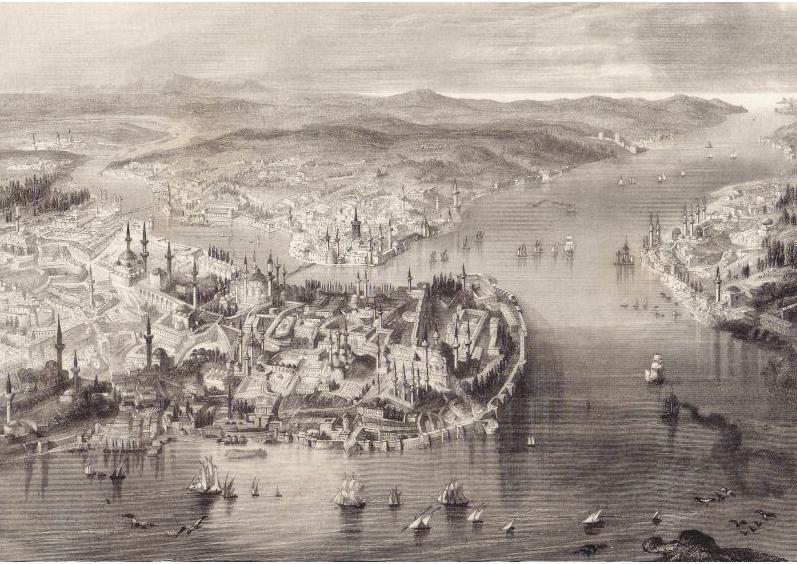
History of Constantinople - (Roman name: Constantinopolis; Greek: Konstantinoupolis or Κωνσταντινούπολη) Constantinople is the former name of the city of Istanbul in Turkey. Today, Constantinople is the area between the Golden Horn and the Sea of Marmara of today's Istanbul. Its original name was Byzantium (Greek: Byzantion or Βυζαντιον, pronounced roughly Bee-ZAN-tee-on). The name is a reference to the Roman emperor Constantine I who made it the capital of the Roman Empire on May 11, 330 AD. Constantine named the city Nova Roma (New Rome), but that name never came into common use.
Constantinople was the capital of the Eastern Roman Empire, also known as the Byzantine Empire. In Byzantine times the Greeks called Constantinople i Poli ("the City"), since it was the centre of the Greek world and for most of the Byzantine period the largest city in Europe. It was captured and sacked by the Fourth Crusade in 1204 and then re-captured by Nicaean forces under the command of Michael VIII Palaeologus in 1261.
Constantinople and the Byzantine Empire finally fell to the Ottoman Empire on May 29, 1453 (See the Fall of Constantinople). The Ottoman Turks called the city Stamboul or Istanbul, from the original Greek "eis tin poli" (to the city.) When the Republic of Turkey was founded in 1923, the capital was moved from Istanbul to Ankara.
The Turks changed the official name of Constantinople in 1923 to Istanbul, but the name change did not take hold in Europe for decades later. Interestingly, in Greece "Istanbul" is still identified on road signs and maps as "Constantinople", as the Greeks do not accept the Turkish identification.
Thank you for reading this history of Constantinople article.